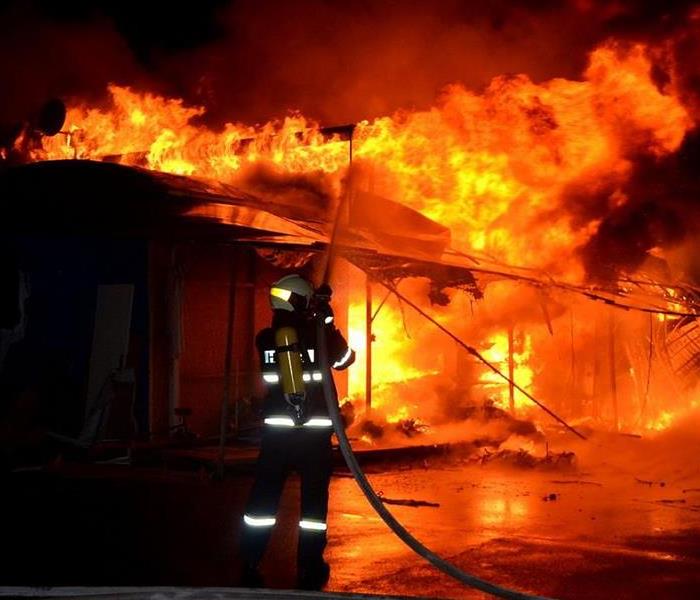The 5 types of Fires
1/8/2021 (Permalink)
Did you know there are FIVE different types of fires?! Fires are categorized into 5 different classes, and each class has different elements that make it unique.
Class A: Class A fires are defined as ordinary combustibles. To put it in simpler terms, these types of fires use commonly flammable material as their fuel source. Wood, fabric, paper, trash ,and plastics are common sources of Class A fires. This is essentially the common accidental fire encountered across several different industries. Trash fires are one such example. Class A fires are commonly put out with water or monoammonium phosphate. (https://www.strikefirstusa.com/news-articles/five-classes-of-fires-fire-extinguishers-stop-them/)
Class B: Class B fires are fueled by flammable liquids, such as gasoline, petroleum greases, tars, oils, oil-based paints, solvents, and alcohols. These fires also include flammable gases such as propane and butane. Class B fires do not include fires involving cooking oils and grease. (https://www.femalifesafety.org/types-of-fires.html)
Class C: A Class C fire is one in which an energized electrical element is the cause of the fire. “Energized” means that the electrical component is connected to a power source. Class C fires may be started from faulty wiring, a short circuit, damage to power cords, overloaded electrical outlets, or overheated/overcharged devices. (https://blog.koorsen.com/what-is-a-class-c-fire-extinguisher-used-for
Class D: Class D fires are characterised by the presence of burning metals. However, not all metals are flammable. Sodium, potassium, uranium, lithium, plutonium, calcium, magnesium, and titanium are all examples of combustible metals. According to www.elitefire.co.uk, the most common type of class d fires involve magnesium and titanium. (https://www.elitefire.co.uk/help-advice/detect-and-extinguish-class-d-fires/)
Class K: Last but not least, we have Class K fires. According to the following quote from https://www.strikefirstusa.com; “A Class K fire is defined as a cooking fire involving combustion from liquids used in food preparation. Technically a type of liquid fire, Class K fires are distinct enough to warrant their own classification. Cooking fires are fueled by a wide range of liquid cooking materials. Greases, cooking oils, vegetable fat, and animal fat are all fuel sources found in Class K fires.” https://www.strikefirstusa.com/news-articles/five-classes-of-fires-fire-extinguishers-stop-them/
No matter what type of fire you experience, SERVPRO of Big Rapids/Fremont is here to help! Our professional crews have been expertly trained to restore the damage done to your home or business. Call us today to set up a free quote! (231)-796-2342






 24/7 Emergency Service
24/7 Emergency Service